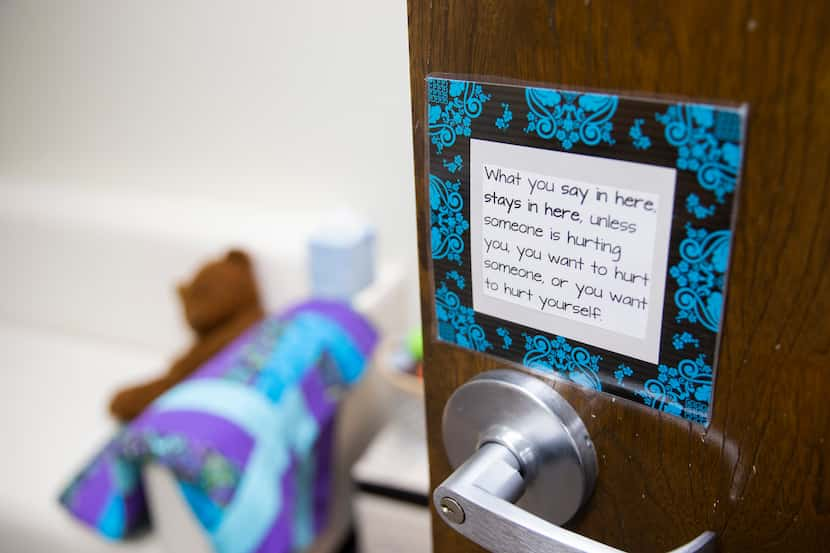The pandemic has taken a toll on our collective mental health. For many students, the school year has been emotionally scarring.
The Centers for Disease Control and Prevention gave us a snapshot of the problem in a study published in the fall. Researchers found that pediatric mental health visits to the emergency room last year increased by 24% from 2019 among kids ages 5 to 11 and 31% among children ages 12 to 17.
While hospitals are where children tend to end up in an emergency, schools are often what stands between them and a full-blown crisis. We applaud school districts that made the choice to invest in student mental health years ago; those investments are needed now more than ever.
Dallas ISD budgeted money in the summer to nearly double its mental health staff, though the addition of 57 mental health clinicians had been in the works before the pandemic, said Jennifer Reed, the district’s director of clinical services. The Dallas ISD mental health department averages 35 referrals per day and offers services such as crisis response, behavior interventions and threat assessment. The department helps more than 20,000 kids a year — about 14% of the district’s enrollment.
Lewisville ISD has had specialized mental health positions for three years. Those 11 licensed professional counselors and social workers are in addition to 150 traditional school counselors. Monya Crow, the district’s director of counseling services, told us counselors spend most of their time interacting with students rather than slogging through clerical work.
The robust staffing has served the district well this year. Crow said the pandemic has strained families that would not have otherwise needed assistance. Counselors and social workers have been busy tending to families struggling with rent, food and utilities.
“We didn’t have to build that airplane quickly in response to the pandemic,” Crow said. “It was already there.”
As our Corbett Smith reported, Lewisville ISD is also piloting an app that asks students several times a week about their social and emotional well-being. The app alerts counselors about concerning responses, revealing issues that school staff might not have known about, Crow told us.
The Uplift Education charter school system, which has a licensed mental health professional at each of its Dallas-area campuses, is also mining technology to help students. For years, Uplift has been surveying students about their emotional learning and their views about their relationships with teachers and their school. This year, Uplift tweaked the survey to ask students if they wanted to follow up with a teacher or counselor about a concern. About 4,000 students raised their hands.
Tony Walker, senior director of student support services, said the most common issue is anxiety, though Uplift has also uncovered potential child abuse and neglect. This is important because the charter system had been averaging about 10 such reports to Child Protective Services a week, but since remote learning started with the pandemic, the number has dropped to about five a month, Walker told us.
We thank these schools and others for having the foresight to invest in mental health and for thinking creatively during the pandemic. Their diligence pulls families away from disaster and may be saving lives.


/cloudfront-us-east-1.images.arcpublishing.com/dmn/R4ZQGZRVQVGNC4NQXEUW6EDMDQ.jpg)
:no_upscale()/cloudfront-us-east-1.images.arcpublishing.com/dmn/33U7Q4NH5YEB2NHWWSAQUB77RQ.jpg)
:no_upscale()/cloudfront-us-east-1.images.arcpublishing.com/dmn/QZJPKXIVHUNAOPMYOTR4KWHXAU.jpg)
/cloudfront-us-east-1.images.arcpublishing.com/dmn/CLNOYLF5LE4U45ZWV5ALQV4WX4.jpg)
/cloudfront-us-east-1.images.arcpublishing.com/dmn/WQ2PADIFGVCITLLHLVMQ3GUQHM.jpg)